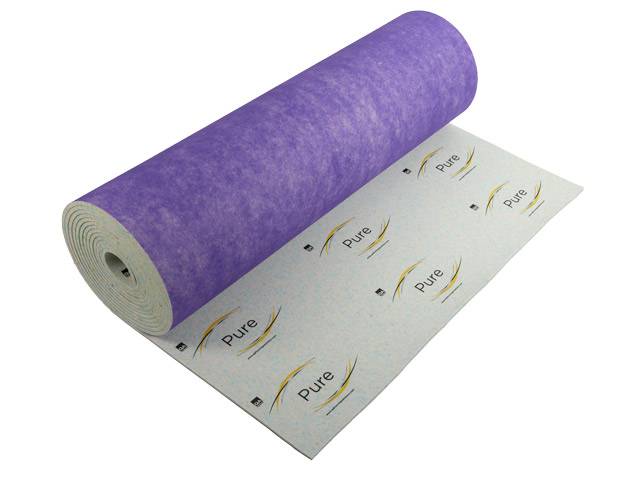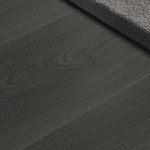Blog
What is the Best Carpet Underlay?

Carpets are amongst the most comfortable and affordable flooring options on the market, but to unlock the most out of your purchase, nothing does it quite like a carpet underlay. An underlay can protect your new carpet and keep it as fresh as the day it was purchased, enhance comfort underfoot and even preserve your home's air quality.
But with so many high-quality carpet underlays to choose from, which is best for you? QA Flooring has crafted this guide to inform your purchase decisions by detailing different types of carpet underlay, whether to aim to protect or enhance your new carpet and how to ensure your purchase is compatible.
For those looking to buy carpet underlay whilst fast-tracking your decision, try ourTraffilaysystem - a quick, three-question quiz that will give you the best carpet underlay (as well as other kinds) for your floor.
How do I find the best carpet underlay for me?
There is no master of all trades for carpets and carpet underlays. Each underlay has varying levels of cushioning thickness and reinforcing density to balance or enhance the carpet type it's under, not to mention each material has its level of thermal insulation and noise reduction qualities.
Ultimately, you will normally target one or two benefits for your carpet underlay. As a result, use the following rankings to narrow down which of our ranges matches what you're looking for.
What is the best carpet underlay compatible with underfloor heating?
There are two high-quality, underfloor heating-compatible carpet underlays:
- HeatWave - The best carpet underlay that is compatible with underfloor heating is HeatWave if you're looking for pure performance, it boasts a low tog rating of 1.2, the lowest in the range. It lets warm air up through the carpet underlay effortlessly, letting you make the most of your underfloor heating whilst retaining the heat it generates. On top of this, it offers a comfortable underfoot experience, being a thick underlay of 8mm. If you're wondering about the name, it's due to also doubling as a flame retardant, providing a barrier beneath the floor that will ward off flames for extended periods.
- ExtraStep - ExtraStep is the commercial-durability variant of this category, with it being high-density to withstand heavy foot traffic. This 6mm carpet underlay for underfloor heating has a tog rating of 1.77 and has high levels of acoustic insulation.
Who has the best carpet underlay for the environment?
QA Flooring is recognised as having some of the most eco-friendly options in the market:
- FloorSure series - This series of premium PU foam underlays is made from reusable sources, like recycled furniture foam, to provide cushioned thermal insulation (preventing heat loss). From silver to platinum, each variant offers 8mm to 12mm of extra cushioning.
- SpringBack series - The SpringBack series is the ultimate choice for a carpet underlay that is as comfortable as it can be amongst eco-friendly options. It's named for its top-class recompression ability, smoothing out the surface and preventing the formation of dents, and its ability to shield the above carpet by absorbing impact with its density.
Which premium option makes the best carpet underlay?
At the time of writing, QA Flooring has just released a premium market dominator that has been designed to bring the most out of your carpet. While our range's series features many contenders for the leading comfortable carpet underlays in the market, one stands head and shoulders above the rest:
- Pure series -QA's Pure range has proven to be unsurpassed in the domestic carpet underlay market, with the luxurious feel earning its premier reputation. The Pure range uses the purest, highest-grade PU foam for superior cushioning and compression recovery, with all six entries in the series featuring densities from medium to maximum to suit a range of purposes. This mix of top-level protection and comfort underfoot will not be found anywhere else.
How dense is the best carpet underlay for durability?
Many of QA Flooring's carpet underlays more than meet the standard of durability quality for all traffic levels both domestic and commercial, but the undisputed champion belongs to:
- ExtraStep - This extremely durable hard-wearing underlay leads the range, graded as extra-high density and weighing in at 180 kg per roll. It is a commercial underlay suited for some of the most high-traffic foot areas featuring carpets, such as malls and marine installations, and will keep your carpet functioning like new under the highest pressure conditions.
Why is QA credited with the best carpet underlay for domestic thermal insulation?
Heat escapes from all areas of the home, and it's up to a uniform insulation effort to keep energy bills lower. QA Flooring offers the best carpet underlay for providing a reduction of heat loss:
- Pure SD 11mm -Pure SD 11mm is one of six entries in the Pure Series and ranks as being the best carpet underlay for various functions - luxury comfort, domestic density and, of course, thermal insulation with a sky-high tog rating of 3.04. This premium heat barrier allows you to make the most of the heating you make.
When was the best carpet underlay for noise reduction released?
This is a hard question to answer, as two separate carpet underlays rank as having the highest levels of sound reduction in the range:
- FloorSure Platinum - Floorsure Platinum is the premium choice of the FloorSure carpet underlay, performing 44db acoustic insulation. This will provide high levels of noise reduction, though bear in mind it comes as a 12mm thick underlay, so check for compatibility. As a very welcome bonus, the carpet underlay is also a contender for the most comfortable in the range, though it's designed for light traffic areas only.
- PowerWalk Gold - PowerWalk Gold is the dense equivalent of FloorSure Platinum, offering the same level of noise reduction at 44 dB. This product is designed for areas of a domestic property with high foot traffic.
Underlay and Carpet Compatibility
As we mentioned briefly before, some underlays are not compatible with certain carpets, so you need to know the compatibility before you buy carpet underlays of any kind. In this section, we will detail what these types of carpets are, and what does and doesn't work with them.
- Loop Pile Carpets - Also known as Berber carpets, these are made with a yarn that forms loops on the surface. The result is a durable and resistant carpet with high durability for areas of high traffic. The underlays you want for these are typically medium-firm ones, as they can provide good support for the unique looping structure and avoid stretching the carpet. A good quality underlay can protect the carpet pile and keep it looking fresh for longer. However, using soft or thick underlays could lead to over-compression, and damage the carpet as a result.
- Twist Carpets - These carpets are known for, and named after, the twisting fibres that are set deep within the backing. The textured surface resists wear and tear, making it a fairly durable carpet. It's a comfortable enough carpet as standard but can be made even more so with a soft underlay. But ensure it's not too dense and hard. This could reduce the plushness of the carpet and make it overly hard.
- Velvet Pile Carpets - These carpets have a short, dense pile that gives a smooth luxurious feeling. Soft plush underlays can further enhance the feel without causing any damage. These carpets are very warm, so underlays that provide insulation will further enhance the comfort and heat retention within your room.
- Saxony Carpets - These carpets are dense, and have long plush fibres. An underlay with good cushioning is recommended for these, as they can enhance the comfort by complimenting its softness, whilst you should steer clear of harder underlays that would detract from it.
- Woven Carpets - These carpets are woven through a loom, and are therefore quite hard and durable. They are, however, high quality, and pair well with firm underlays that can support their weight. Softer underlays may make the carpet feel softer but provide inadequate support.
Natural Fibre Carpets - These carpets are made from natural materials and can have a rough texture. Again, a firm underlay is recommended for this, as it can match the toughness of the carpet.
Best Carpet Underlay - Expert Guide - FAQs
-
What are carpet underlays made of?
Carpet underlays lay beneath your flooring and enhance them based on the type of material it's made from:
- Polyurethane (PU) foam carpet underlay - PU foam as a material is very popular and versatile, extensively used for both carpet and laminate flooring. It is the most popular (and cost-effective) due to the lovely cushioned feeling it provides underfoot. Its versatility compliments carpets of many different types, materials and uses - such as from general domestic to luxury. It is lightweight, meaning it's easy to move and install. PU foam underlays differ in terms of thicknesses and densities, allowing you to ratio the soft underfoot experience against strength and durability to suit you.
- Recycled furniture foam carpet underlay - Recycled furniture foam is affordable and eco-friendly for respectable levels of compression recovery.
- Rubber carpet underlay - Rubber is a material known for its density and durability, and it makes for a hard-wearing underlay for both commercial and domestic areas. It can come in various forms, each of which determines its strengths:
- Crumb rubber underlays - A crumb rubber underlay is highly durable and typically shows amazing noise reduction powers. Made from recycled car tyres, the crumb rubber variant is amongst the most eco-friendly carpet underlays. Furthermore, if you want a cost-effective option, a recycled crumb rubber type is very valuable in terms of money.
- Waffle sponge rubber underlays - Awaffle sponge rubber carpet underlay offers a heat barrier that provides insulation and provides a soft underfoot feeling.
- Sponge rubber underlays - A sponge rubber carpet underlay deprioritises durability to provide an exclusively soft underfoot feeling, best for areas like the bedroom. These typically make the cheapest underlay outside of recycled products.
- Recycled rubber underlays - Another recycled rubber carpet underlay option for the environmentally conscious, available for both carpet and laminate flooring.
- Felt carpet underlay - Felt underlays are made from fibres that have been recycled, meaning they are a nice eco-option.
- Combination Underlay - Combination underlays are, as the name implies, made up of different types of materials to create a hybrid that has the benefits of all. This of course makes them ideal for use with specific carpet types such as Axminster - ensuring that you get a nice level of comfort and durability at a price that reflects the value you have invested in your carpet.
-
Why should I get an Underlay?
Underlayments give a bunch of benefits to the floor above it:
- Comfort - Carpets are already some of the most comfortable flooring options on the market, but an underlayment can add another dimension to this facet. With an underlayment, you can expect a sharp rise in the definition of the softness and springiness of your steps.
- Durability - Since the underlayment absorbs the shock, it also absorbs the wear and tear that would otherwise be inflicted on your carpet.
- Insulation - This is one of the more impressive elements of underlayments. An underlayment's insulation benefits not only make your home more comfortable in terms of temperature but also prevent the escape of heat through your floor.
- Noise reduction - Whilst carpets are not necessarily a noisy flooring option, the subfloor beneath it can still make noise. This noise can be absorbed with an underlayment, leading to a much more peaceful house.
-
How do I choose the right underlay for me?
The right underlay for you is almost certainly the underlay offering the benefits that you prioritise the most. Things such as:
- Thickness - Your Underlay's thickness will generally determine how comforting your underlay is. Underlays typically range between 6mm to 12mm in terms of thickness, with the thicker side providing a greater level of comfort and cushioning. That being said, understand that they may not be compatible with all types of carpets. It's possible that adding an underlay to an already thick carpet, such as those with a low pile or dense weave, could make a carpet feel too soft, to the point of feeling unstable.
- Density - Density is different from thickness. Density refers to exactly how much material, on a kg per cubic metre basis, is packed into the space in question. So, underlay A can be thicker than underlay B, but underlay B can be stronger, due to density. Meaning, of course, that high-density underlays provide better support, and can determine how long underlays will last.
- Tog Rating - A Tog Rating measures the thermal resistance of an underlay, which of course is the process of being able to retain heat and stop it from escaping. High insulation underlays can contribute to reducing energy bills. That being said if you are interested in underfloor heating, a high Tog rating will actively work against you. So a low Tog rating is recommended for use with underfloor heating.
- Sound Reduction - Sound reduction can be provided by the type or density of the material used. The higher the dB rating the better the insulation for impact sound reduction

